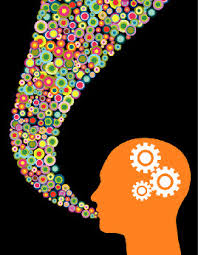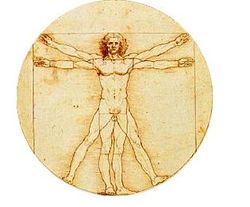
Just like fabric, or food, or a recording can be of higher or lower quality, our attention has a gradation of quality to it also. We can learn to detect this – and other people can detect it too. High-quality attention is stable (not wavering), and has both depth and lightness to it. That is, there is some substance and strength to the attention, but it is not heavy and penetrating. In addition, it feels open, receptive, and allowing – it is not colored by views or judgments. (Here is a talk I gave on Quality of Attention)
Mindfulness and Dharma practice have the effect of increasing the quality of our attention over time. I have also found that practice makes me more sensitive to noticing the quality of attention (in myself and others), and that I have started to value this. I find that I value having higher-quality attention.
I have heard this phrase for advertising a circus performance: "Live, without a net.”
In that case, we are supposed to be awed that someone would do acrobatics up high without a safety net. Truthfully, this sounds unwise to me. But in the realm of Dharma practice, it is the perfect phrase.
"Live, without a net” is what practice moves us toward.
What are the “nets” that we use? I am using the word “net” to mean something that we bring into an encounter as an extra, often unseen, prop. It lowers the quality of attention. It hangs in the wings or beneath us, not as a beneficial support, but as an appendage / something awkward. It is not an accident that a net is also something that can bind us. When a net like this is not seen, it ties us up.
One such net is actually called that -- the Internet. The mere presence of a cell phone on the table during an interaction has been found to reduce both the cognitive ability and emotional / empathetic connection between the people.
But if the nets were only external, it would be a pretty easy problem to solve. The far bigger issue is the internal nets that bind us. One is the past.
Important and often unseen components of our experience are the past associations that come up based on what’s happening now. For instance, someone we meet might resemble an old romantic partner or college roommate, and so we bring in emotions or reactions associated with the older experience and not necessarily relevant to what’s happening now. Sometimes this happens subconsciously if the association is subtle, such as the person’s accent or way of walking.
It’s not so much that we need to delve into the psychology and figure out what relationship issues are coming up through this past association. A more Dharmic approach is simply to notice how perception works in the mind: Past experience automatically comes into present-moment experience, and we need (a) mindfulness to see that, and (b) wisdom to know whether the past association is relevant or not.
If we lack sufficient mindfulness or wisdom, then the past association divides our attention, drains away energy, and generally lowers the quality of the attention we have to respond truly to this person right in front of us.
Our views (or ways of seeing things, or orientations toward things), have quite an influence too. If I carry the view that meditators are generally boring to talk with, then I am much more likely to be bored at a meditation center than if I didn’t carry that view. I would walk in with that filter, and it would influence my experience.
And that actually lowers the quality of my attention because I am only attending to part of the picture. Remember that high-quality attention is fresh and receptive, open to what is actually here. Fixed views limit and confine what I can see.
So stepping back, we have now talked about internal conditions that may prevent us from having high-quality attention: Memories or past associations, and also views. When are they an actual distraction? In general, we get distracted by internal events if we don’t have enough attentional strength. We have a reaction or a response because of our past or because of views, and if we can’t hold it, it can take over.
Quality of attention is part of the path – it shifts and changes over time. And each moment of awareness is an advance; you never go backward. The quality gets higher and higher, on average. More and more, we are "live, without a net." And as we get used to practicing this way, it can actually feel as if there is “no net,” no ground. Or sometimes it feels more like having no reference points. This too is practice.
Mindfulness and Dharma practice have the effect of increasing the quality of our attention over time. I have also found that practice makes me more sensitive to noticing the quality of attention (in myself and others), and that I have started to value this. I find that I value having higher-quality attention.
I have heard this phrase for advertising a circus performance: "Live, without a net.”
In that case, we are supposed to be awed that someone would do acrobatics up high without a safety net. Truthfully, this sounds unwise to me. But in the realm of Dharma practice, it is the perfect phrase.
"Live, without a net” is what practice moves us toward.
What are the “nets” that we use? I am using the word “net” to mean something that we bring into an encounter as an extra, often unseen, prop. It lowers the quality of attention. It hangs in the wings or beneath us, not as a beneficial support, but as an appendage / something awkward. It is not an accident that a net is also something that can bind us. When a net like this is not seen, it ties us up.
One such net is actually called that -- the Internet. The mere presence of a cell phone on the table during an interaction has been found to reduce both the cognitive ability and emotional / empathetic connection between the people.
But if the nets were only external, it would be a pretty easy problem to solve. The far bigger issue is the internal nets that bind us. One is the past.
Important and often unseen components of our experience are the past associations that come up based on what’s happening now. For instance, someone we meet might resemble an old romantic partner or college roommate, and so we bring in emotions or reactions associated with the older experience and not necessarily relevant to what’s happening now. Sometimes this happens subconsciously if the association is subtle, such as the person’s accent or way of walking.
It’s not so much that we need to delve into the psychology and figure out what relationship issues are coming up through this past association. A more Dharmic approach is simply to notice how perception works in the mind: Past experience automatically comes into present-moment experience, and we need (a) mindfulness to see that, and (b) wisdom to know whether the past association is relevant or not.
If we lack sufficient mindfulness or wisdom, then the past association divides our attention, drains away energy, and generally lowers the quality of the attention we have to respond truly to this person right in front of us.
Our views (or ways of seeing things, or orientations toward things), have quite an influence too. If I carry the view that meditators are generally boring to talk with, then I am much more likely to be bored at a meditation center than if I didn’t carry that view. I would walk in with that filter, and it would influence my experience.
And that actually lowers the quality of my attention because I am only attending to part of the picture. Remember that high-quality attention is fresh and receptive, open to what is actually here. Fixed views limit and confine what I can see.
So stepping back, we have now talked about internal conditions that may prevent us from having high-quality attention: Memories or past associations, and also views. When are they an actual distraction? In general, we get distracted by internal events if we don’t have enough attentional strength. We have a reaction or a response because of our past or because of views, and if we can’t hold it, it can take over.
Quality of attention is part of the path – it shifts and changes over time. And each moment of awareness is an advance; you never go backward. The quality gets higher and higher, on average. More and more, we are "live, without a net." And as we get used to practicing this way, it can actually feel as if there is “no net,” no ground. Or sometimes it feels more like having no reference points. This too is practice.






 RSS Feed
RSS Feed